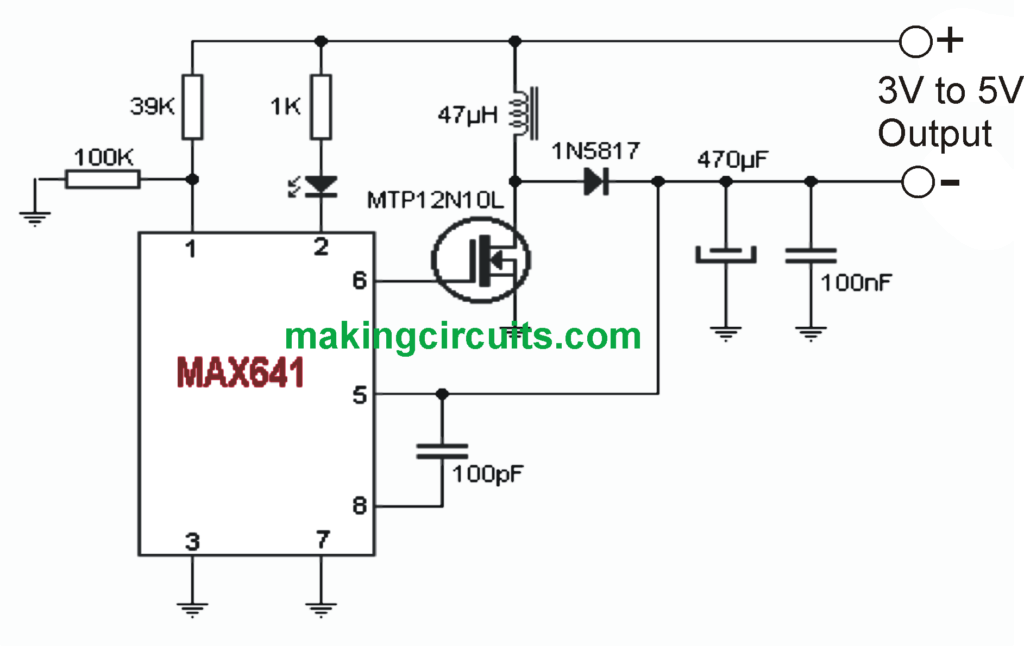The post narrates how a single chip MAX641 can be used for making an efficient 3V to 5V boost converter circuit for charging 5V battery from a 3V source for illuminating power LEDs from a 3V source.
A quick glance at the electronic market lets us to see that practically everything in electronics are accessible today although most of the sophisticated and efficient items being made through microcontrollers. But you may be wondering what if we'd require a 5V from a 3V source without adding several batteries in sequence? ... The solution to this issue may be the circuit that's offered below.
Dependent on an integrated circuit from Maxim IC's MAX641, this particular little circuit enables to acquire 5V by establishing just a couple of type AA or as well as AAA.
Not really far off is actually the standard (and inefficient 7805) linear regulator, but this IC needs a minimum of 8V at its input to ensure 5V at its output (besides it generates an excessive amount of heat!)
Conversely, this particular small eight-pin integrated circuit, just like a 555 in Its structure is perhaps more nor less than a boost or step up SMPS Controller circuit which simply needs a few passive components to operate correctly.
Some very exciting details regarding this 3V to 5V boost converter circuit which can e learned from the following details:
Being of a switched (or switching) topology, this circuit practically will not generate much heat.
The system consumes incredibly small current to operate.
Through the sensing of the output power, thispin#5 loop (Feedback) enables the unit to manage the stress level very effectively.
Additionally it includes an output pin that can be used for configuring a LED low battery indicator
Pin#2 of the integrated device becomes grounded in case the battery level declines. This particular pin can easily instantly become compatible with an LED indication circuit or even it could possibly electronically accept a pinout of the microcontroller in order that it can be used for displaying the data visually externally, as an example, through an LCD display indicator.
